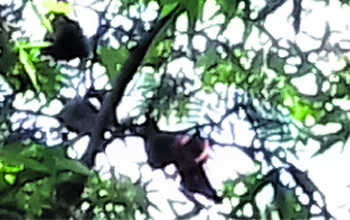Shriniwas Joshi
Returning from a recent visit to Sarkaghat, I found TV and AIR transmitting the news that Nipah virus has killed 12 people in north Kerala and has caused a public health scare. The word Nipah has originated from a village of the same name in Malaysia where the first person had succumbed to the disease. Nipah virus or NiV infection is an infectious disease that causes severe illness in animals and humans. The symptoms of the disease are fever, headache, drowsiness, disorientation, mental confusion, etc. Once diagnosed, the patient must be kept in isolation. “There is still no vaccination available for this virus so the treatment is largely focused on managing fever and neurological symptoms,” says Dr Uday Veer Singh, who runs a dialysis centre at Bharari.
The primary carriers of this virus are bats and they often drop half-eaten fruits which, when consumed by other animals or humans, spread the infection. It is advised that such half-eaten fruits are not eaten by anybody. In Kerala, it was wrongly believed that it had spread from the water of a well where the bats used to live and people consumed that water. The bats had spread a scare in Himachal Pradesh too. The presence of eight dead bats under a tree near Government School, Burmapapri, in Sirmaur district created a scare among the locals. The preliminary investigations disclosed that their death was due to heat. The dead bats got the burial there and the latest report of the Health Ministry had ruled out bats as the primary source of the present Nipah virus of Kerala.
The Health Ministry has urged people not to panic but to take preventive measures like not eating fruits strewn on ground partially eaten by birds. The Sewa Sankalpa Samiti, Sarkaghat, can play an important role in spreading awareness among the people of the area, especially in Gadhyani village.
Gadhyani village is 6 km away from Sarkaghat, where I was told that hundreds of bats, called ‘puth kaav’ (inverted crows in local lingua) rest on the trees. Hansraj Bharati, a litterateur of the area, navigated me to the place. It was a sight where hundreds of bats were hanging on the branches of ‘Toll’ trees, the leaves of which are used to make ‘pattals’ or eating plates. The villagers are protective of these birds and when they found us trampling the jungle, one of them asked in Mandyali, “Are you shooting the puth kaavs?” “Yes,” replied Hansraj in the same dialect, “but with a camera”, he added. This developed camaraderie between the two and we continued with the shooting. The villagers of Gadhyani and others told us that these bats had been living there for unknown years. A few of them had seen these bats 70 or 80 years ago when they were school students. The jungle was thick with different species of trees. It was humid too. The villagers told us that this was the atmosphere that these bats required and they were gratified that the birds never harmed their agriculture or horticulture produce. They added that the birds flew to the neighbouring villages at night and nibbled on the fruits there and assembled here with dawn when they start chirping thus making us leave the beds. Like pros going with cons, the benefits of pollination and seed propagation that they do to the fruit farms outweighs their destructive tendencies towards the fruits.
While we were taking photographs of the bats, they were continuously throwing droppings down. We had to save ourselves from this downpour. Do you know that bat droppings, called guano, are one of the richest fertilisers? Guano is the accumulated excrement of seabirds and bats. As manure, it has high content of nitrogen, phosphate and potassium -– all these are nutrients essential for plant growth. That could be one reason for the thickness of the Gadhyani forest. During the 20th century, guano-producing birds, bats, sea-gulls, etc, became an important target of conservation programmes and influenced the development of environmental consciousness. Bat guano used to be a big business once and it was Texas’s largest mineral export before the Texans found the oil.
I enriched myself through Google to know that there were 1,100 species of the bats worldwide making up a quarter of the world’s mammals and that the bats could live more than 30 years and fly with speed up to 60 miles per hour. Many bats eat insects and can eat up to 1,200 mosquitoes in an hour and often consume their body weight insects every night thus keeping a check on the bug population. Could be the reason for the torrents of guano that we faced while photo-shooting the bats!
Tailpiece
A German poet Joseph Victor Scheffel had written a poem Guano Song; stealing from him here is my version: “God bless you-guano puth kaav, / Of the far away land of Sarkaghat/ In spite of tolerable writings that I do/ The stuff which you make is the best.”
Unlock Exclusive Insights with The Tribune Premium
Take your experience further with Premium access.
Thought-provoking Opinions, Expert Analysis, In-depth Insights and other Member Only Benefits
Already a Member? Sign In Now










